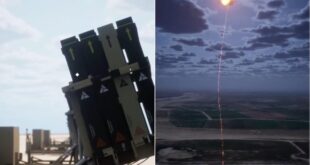The Defense Department’s 2018 National Defense Strategy was blunt in its assessment of America’s eroding strategic advantages: The U.S. military no longer enjoyed global primacy, and to remain competitive, needed to make fundamental changes. Namely, it must build a more lethal and modern force; strengthen international alliances and partnerships; and reform the department to improve performance and affordability. National security professionals across the political spectrum endorsed the strategy, and Congress gave it bipartisan support.
Despite the NDS’s success in building a sense of urgency, it has not changed defense investment priorities at the scale or scope necessary to prepare the U.S. military for great power competition. While there are several reasons for this, we believe that a major contributing factor is a fixation on “readiness,” and how it is conceptualized, by the military services, the Defense Department and Congress.
Every year the United States commits billions to building it, developing metrics to measure it, and striving to create and maintain more of it — but what exactly is readiness?
Readiness is fundamentally about preparedness for combat — having the right equipment, training and maintenance to succeed on current and future battlefields. Unfortunately, the high operational tempo of the past two decades has distorted the understanding of readiness. Readiness has become synonymous with availability. In other words, a ready unit is one that is available for immediate deployment — prepared to “fight tonight.”
But what about units that must fight in tomorrow’s conflicts? While this short-term and narrow view of readiness may have been appropriate for an earlier era, when America’s military capabilities far exceeded those of our adversaries, it is poorly suited to an environment characterized by great power competition.
To compete with the People’s Republic of China and Russia, and successfully address other emergent challenges, the U.S. military requires a new framework for assessing readiness. It should focus less on near-term availability and more on future capability and warfighting advantage over peer adversaries.
The current framework is unbalanced and strongly biases spending on the legacy equipment we possess today, much of which was designed in the 1980s and 1990s. While these legacy capabilities may have been instrumental in deterring conflict and winning battles in an earlier era, they no longer provide an edge over competitors — a core conclusion of both the NDS and Congress’s bipartisan Future of Defense Task Force. We propose a new framework for defining readiness, one that better balances today’s needs with those of tomorrow, incorporating elements of current availability, modernization and risk.
As a starting point, we recommend adding to readiness metrics new layers of analysis utilizing artificial intelligence to leverage the military’s data-rich environment. Such a framework would enable military service chiefs to better prioritize investments in research, development and future force design initiatives, rather than spending the majority of their resources on making decades-old capabilities ready for employment.
Ultimately, this framework would allow us to deliver the forces that today’s combatant commanders need to engage with allies and partners, compete with adversaries, deter conflict and, if necessary, win wars. But it would also allow investment in the capabilities that future combatant commanders will require for the same missions. Building a rigorous, data-driven, analytically strong readiness framework will help better balance the risks and tradeoffs between satisfying immediate requirements for available forces with the imperatives of modernization.
Our primary function as service chiefs is to organize, train and equip our forces for employment. We owe the combatant commanders who use these forces the capabilities that produce a warfighting advantage now and into the future, not simply greater quantities of existing equipment unsuited to competition or conflict with great powers.
Achieving this goal will require accelerating investments in capabilities, including hypersonic weapons; AI-enabled remotely piloted aircraft; long-range penetrating strike; truly joint all-domain command and control; unmanned, low-cost, expendable ground, surface and air vehicles; long-range mobile ground-launched missiles; and better integrated air and missile defenses.
To be clear, we do not suggest merely cutting funds for near-term readiness and legacy capacity, but rather redirecting savings toward transformative modernization as part of our proposed new readiness framework and consistent with larger future force design models. Updating how we measure and conceive of readiness will enable the military services, Defense Department and Congress to “identify, replace and retire costly and ineffective legacy platforms,” a critical necessity noted by the Future of Defense Task Force.
Americans understandably expect their Air Force and Marine Corps to be ready to defend the nation — both today and in the future. Unfortunately, a preoccupation with today’s crises is putting at risk preparations for future challenges. This must end. It is time to usher in a new understanding of what it means to be “ready” in an era of renewed competition. We have a unique, but limited, window of opportunity. The time to act is now.
 Eurasia Press & News
Eurasia Press & News



